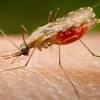Oropouche virus disease
2024 - 8 - 28Unpacking ‘Sloth Fever’: Oropouche Virus Takes Flight in Europe and Beyond!
Oropouche virus CDC - Europe - mosquito-borne diseases - Oropouche virus - sloth fever - travel health - United StatesIs ‘sloth fever’ the new travel trend? And no, we’re not talking about relaxing on a beach! Discover why the Oropouche virus is making headlines and how you can stay safe!
Travel, once a joyous escape, can sometimes come with unexpected souvenirs—like a tropical virus! Meet the Oropouche virus, affectionately (or perhaps not) nicknamed ‘sloth fever’. This pesky little bug was first diagnosed in travelers returning from Central and South America but has swiftly spread to Europe and the United States. So far, it's been popping up more frequently, with 19 reported cases in Europe from a couple of vacation hotspots. Talk about a vacation you didn’t plan for!
What does ‘sloth fever’ actually mean? Aside from the fact that it’s named after lovable sloths that can be infected, the symptoms are no picnic. Fever, severe aches, and fatigue are just a few fun gifts this virus may thank you with! The Centers for Disease Control and Prevention (CDC) recently issued warnings as the virus spreads; they noted 21 cases in travelers who dared to backpack back from Cuba. If you thought layovers were exhausting, try dealing with a viral hitchhiker!
But it’s not only in the United States—Europe has been on high alert too. Since the initial cases, health officials have been working diligently to monitor the spread. So, the next time you’re packing your bags to jet off, you may want to read the health advisories before deciding on your destination. While we’re all for an adventurous spirit, ensuring you don’t bring home an unwanted viral souvenir is equally important.
So what’s the deal? Whether you’re lounging on a beach in Cuba or trekking through the lush jungles of Central America, it’s essential to stay informed about the health risks. Keep your bug spray handy, and don't forget those travel advisories. In the world of viruses, it’s better to be safe than sorry! And here’s a fun fact—did you know the Oropouche virus was first identified in 1955? It's surprising to think this little virus has been sneaking around for decades, waiting for just the right moment to make its comeback!

Oropouche virus is spreading through travel: What Europeans need ... (Euronews)
19 cases have been reported in Europe so far and the travellers had all been to the same two countries.

What to know about 'sloth fever' as U.S., Europe warn of imported ... (The Washington Post)
Twenty cases of the Oropouche virus disease were reported in Florida and one in New York. Symptoms include fever and aches, and the virus poses a particular ...

What is sloth fever? The Oropouche virus and its symptoms, explained. (CBS News)
The Oropouche virus, a potentially fatal disease also referred to as "sloth fever," has made its way to the United States. Here's what to know.

CDC snapshot details Oropouche virus infection in 21 travelers to ... (CIDRAP)
The Centers for Disease Control and Prevention (CDC) and state partners from Florida and New York yesterday reported their clinical findings on 21 imported ...

'Sloth fever,' or the Oropouche virus, has entered the US, here's what ... (Fox News)
A disease transmitted by mosquitoes — the Oropouche virus, or sloth fever — has been detected in the United States. Travelers returning to the U.S. from ...

Sloth fever: What to know about insect-borne Oropouche virus (WLWT Cincinnati)
The U.S. Centers for Disease Control and Prevention has issued a health advisory following an increase in an insect-borne virus that has now reached the ...

'Sloth Fever' Virus Is Spreading. Here's What You Need to Know ... (Scientific American)
The Oropouche virus, which causes a disease nicknamed “sloth fever” for one of the animals that can be infected, has seen its first cases in the U.S..

Oropouche virus, also known as "sloth fever," explained (Axios)
The detection of 21 cases of the insect-borne Oropouche virus disease, also known as "sloth fever," in U.S. travelers returning from Cuba has prompted ...

Oropouche Virus Disease Detected Among U.S. Travelers ... (CMM)
The emergence of Oropouche virus, an arthropod-borne virus in the Americas, has become a major health concern, infecting more than 8,000 people this year, ...
Explore the last week
- 2024 - 12 - 20, 28 topics across 196 articles.
- 2024 - 12 - 19, 21 topics across 238 articles.
- 2024 - 12 - 18, 26 topics across 347 articles.
- 2024 - 12 - 17, 31 topics across 452 articles.
- 2024 - 12 - 16, 18 topics across 186 articles.
- 2024 - 12 - 15, 43 topics across 612 articles.
- 2024 - 12 - 14, 32 topics across 303 articles.